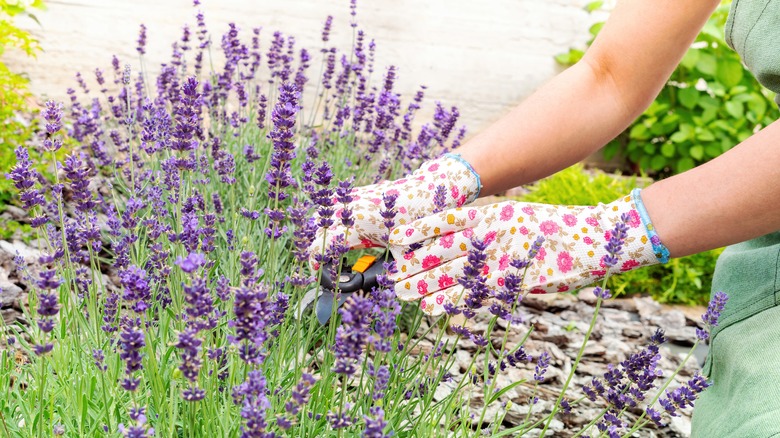Poisonous flowers in the garden isn’t just the plotline from your favorite CW series. Monkshood, also known as wolfsbane, is a gorgeous but highly poisonous plant easily mistaken for harmless look-alikes that may grow near your home. It is characterized by its tall, erect stems that can reach heights of up to 6 feet and dark green, deeply divided, palmate leaves. Unfortunately, a close encounter with this beauty can have serious consequences.
Monskhood has unique and striking flowers with a hood-like shape that gives the plant its name. They come in blue, purple, white, or yellow, blooming in clusters at the top of the stems. You’ll typically find monkshood in cool, mountainous regions of the Northern Hemisphere, such as Europe, North America, and Asia. It thrives in moist soil and often pops up near streams, rivers, or woodland areas, making these potentially dangerous spots for unsuspecting passersby.
Despite its beauty, monkshood is a dangerous plant due to its high toxicity. All parts of the plant contain aconitine, a potent neurotoxin that affects the nervous system. It can cause symptoms such as numbness, tingling, burning sensations in the mouth and throat, nausea, vomiting, and diarrhea. In severe cases, it can lead to paralysis, respiratory failure, and even death. This poses a challenge for those who wish to break up with monkshood for good and remove it from their garden.
How to safely remove monkshood from your property

Monkshood is not a plant you want to cozy up to. Before handling it, wear gloves, long sleeves, long pants, and closed-toe shoes to protect your skin from direct contact. Maintain your boundaries by using a shovel or gardening trowel rather than grabbing the plant with your hands. Carefully dig around the base of the monkshood, ensuring you remove as much of the root system as possible without breaking the roots, as this can release its toxic sap.
After removing the monkshood from the soil, place it directly into a heavy-duty plastic bag. This will stop any accidental contact with the plant and its sap. Seal the bag tightly to prevent any leakage or exposure to the toxic fluid. Double-bagging is recommended for added safety. From there, contact your local waste management facility or follow the guidelines provided by your municipality to dispose of poisonous plants properly. Do not compost or burn monkshood, as this can release toxins into the environment.
If you come into contact with monkshood or accidentally ingest it, it is crucial to seek immediate medical attention. Do not induce vomiting unless instructed by a healthcare professional. Rinse your mouth thoroughly with water and remove any contaminated clothing.
Beautiful alternatives to monkshood

While monkshood is a beautiful and interesting flower to behold aesthetically, its poisonous properties pose a danger to you, your family, and your pets. Instead, invest your time, money, and love into other non-toxic flowering plants. Lavender is a popular choice known for its beautiful purple blooms and soothing fragrance. It has many benefits, including attracting pollinators like bees and butterflies. It also has calming properties and is often used in aromatherapy to promote relaxation and reduce stress. Additionally, lavender can be used in cooking and baking to add a unique flavor to dishes. You may want to plant lavender because it adds a touch of elegance and tranquility to any garden. Its vibrant purple flowers create a visually appealing display, while its fragrance enhances the sensory experience.
Another excellent alternative to monkshood is geraniums, a versatile flowering plant available in various colors, including pink, red, white, and purple. They are non-toxic and safe for both humans and pets. Geraniums are known for their long-lasting blooms and ability to thrive in different climates. These low-maintenance plants can be grown in containers or directly in the ground. They also have a pleasant fragrance and can attract butterflies to your garden. Their adaptability and easy nature make them an ideal choice for beginner and experienced gardeners.



